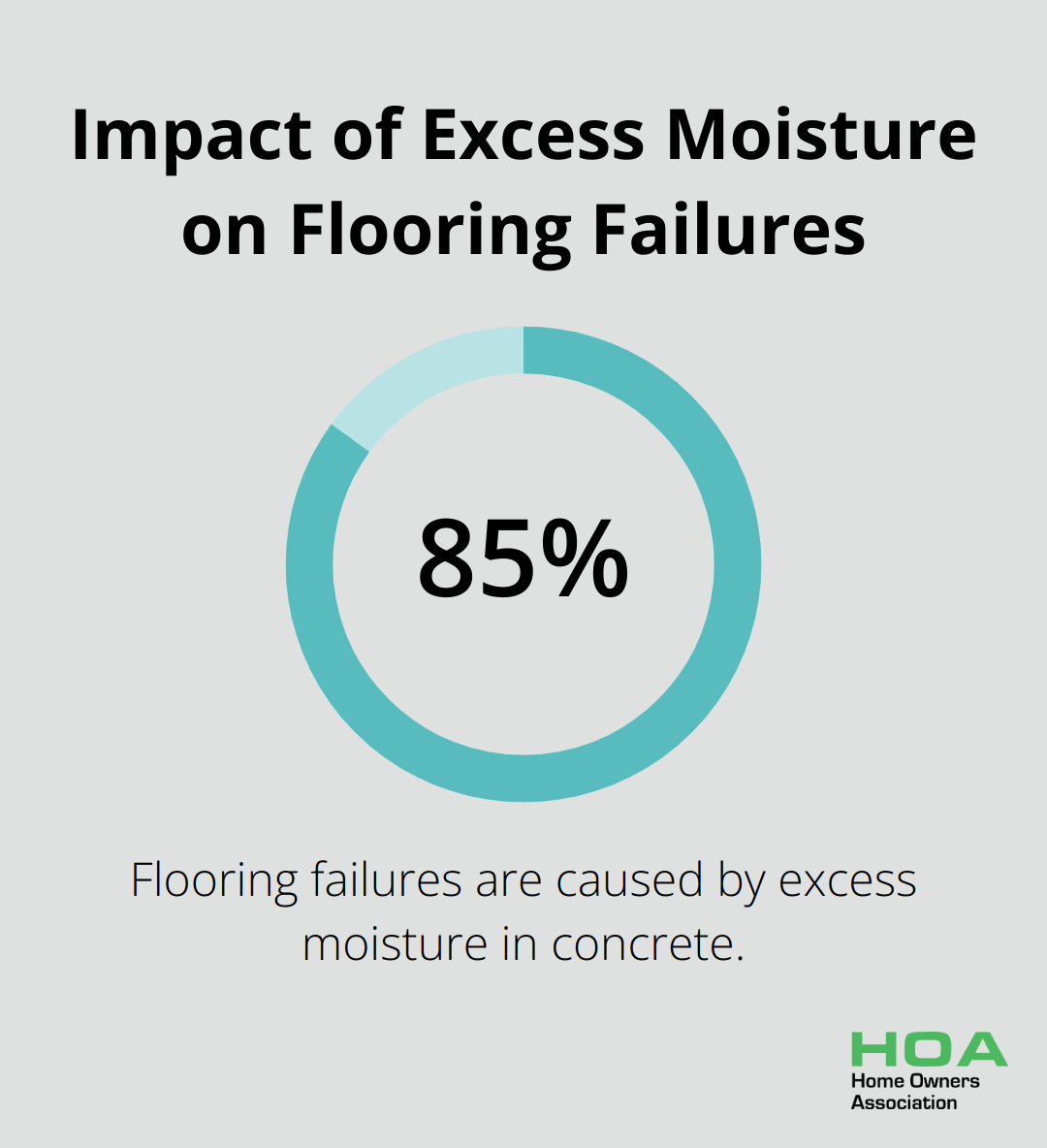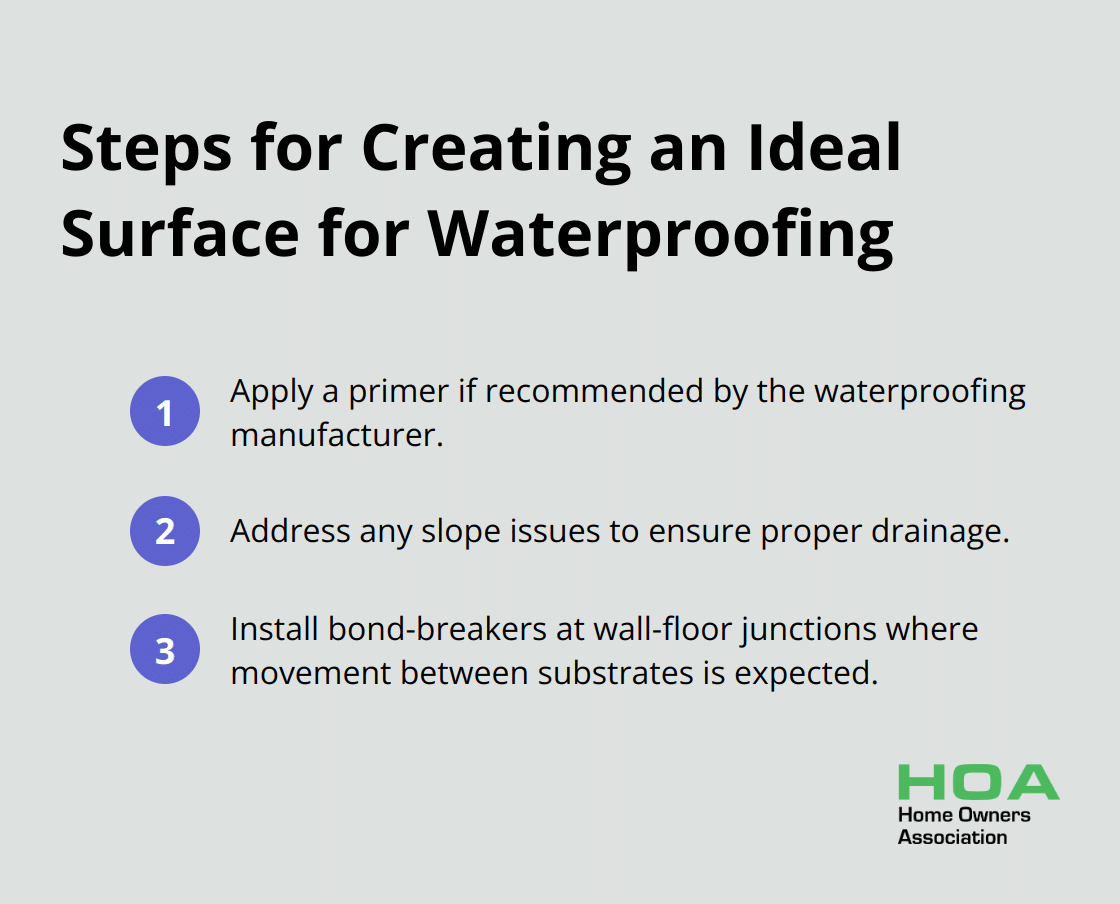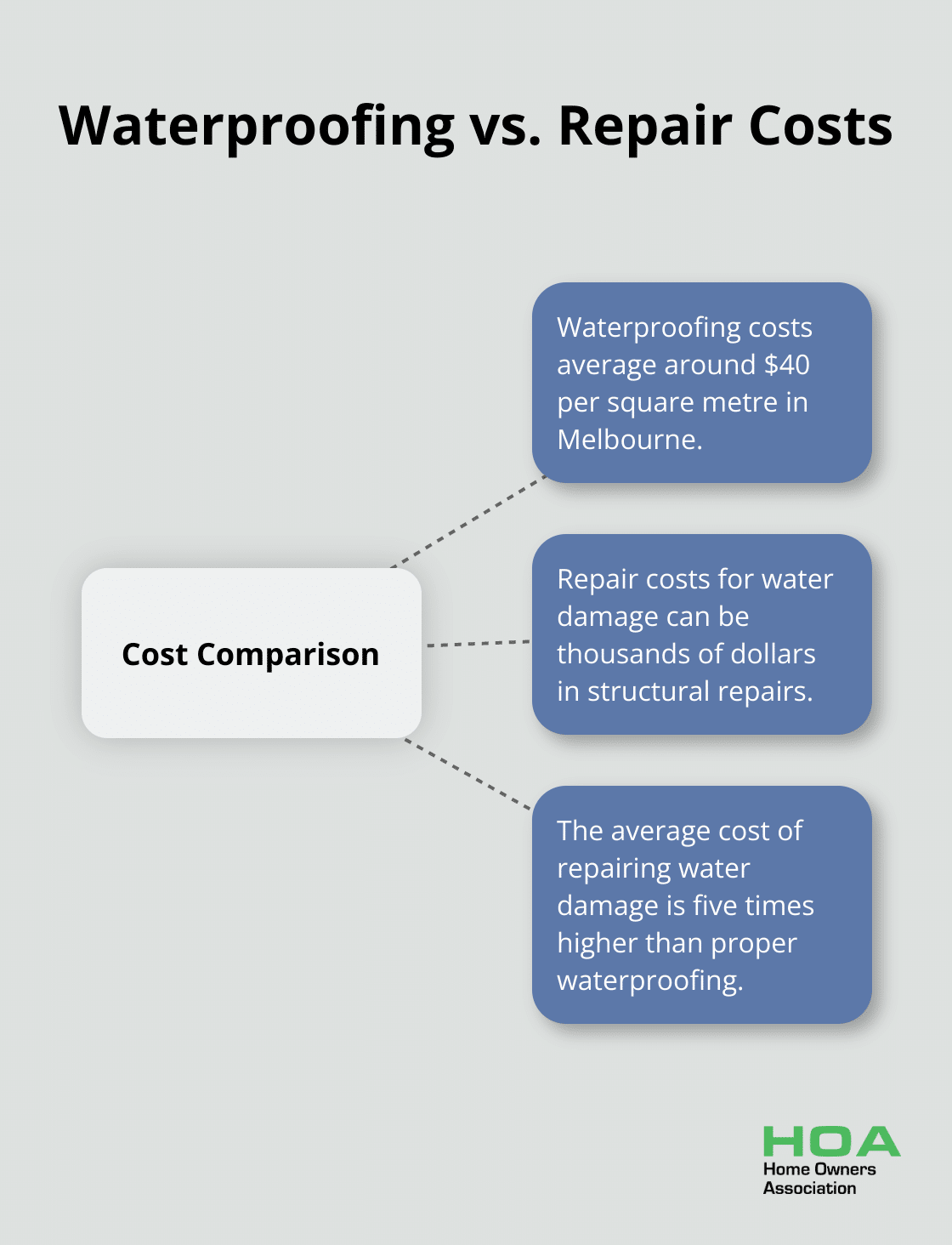
At Home Owners Association, we understand the importance of protecting your property from water damage. Balcony waterproofing is a critical step in maintaining the structural integrity of your home and preventing costly repairs.
A well-waterproofed balcony not only extends its lifespan but also enhances your living space. In this guide, we’ll walk you through the essential steps to effectively waterproof your balcony and keep it in top condition for years to come.
Why Waterproof Your Balcony: Protecting Your Investment
The Hidden Dangers of Water Infiltration
Water damage on balconies often starts silently, with small leaks that gradually weaken the structure. Over time, this can lead to concrete spalling, where the reinforcing steel corrodes and expands, causing the concrete to crack and fall away. Insurance statistics have shown that the highest number of waterproofing failures are in balconies, terraces, and rooftops in high-rise dwellings.
Spotting Early Warning Signs
Early detection of water damage can save thousands in repairs. Watch for these indicators:
- Efflorescence (white, powdery deposits on concrete surfaces)
- Rust stains or visible cracks in the balcony floor or walls
- Peeling paint or bubbling in the ceiling below the balcony
- Musty odours or visible mould growth
If you notice any of these signs, take immediate action. Bruce McKenzie from Sedgwick points out that postponing balcony waterproofing for just 2-3 years can lead to exponential increases in repair expenses.
The Financial Case for Waterproofing
The initial cost of waterproofing might seem high, but it’s a fraction of the expense of major repairs. In Melbourne, waterproofing costs average around $40 per square metre. Compare this to potential thousands in structural repairs, and the choice becomes clear.
Moreover, a well-maintained balcony adds value to your property. According to a recent study, the value added by waterproofing balconies can range from $550 to $6,900 per apartment.
Australia’s Unique Climate Challenges
Australia’s diverse climate presents specific challenges for balcony waterproofing. In Melbourne, unpredictable weather patterns with heavy rainfall and strong winds make effective waterproofing essential. Coastal areas face additional challenges from salt spray, which can accelerate corrosion if water penetrates the structure.
To address these challenges, you need to select appropriate waterproofing methods and materials. The next section will explore various waterproofing techniques and help you choose the right approach for your balcony.
Preparing Your Balcony: The Foundation for Effective Waterproofing
Deep Cleaning: Beyond Surface-Level Tidiness
Remove all items from your balcony before you start. Use a pressure washer to eliminate dirt, grime, and loose debris. For stubborn stains, apply a degreaser or specialised concrete cleaner. Focus on corners and edges where dirt accumulates.
Allow the surface to dry completely (this might take 24 to 48 hours). Use a moisture meter to check if the surface is dry enough for waterproofing. According to the Building Services Authority (BSA), 85% of flooring failures are due to the presence of excess moisture in the concrete.

Thorough Inspection and Repair
Inspect your clean, dry balcony carefully. Look for cracks, chips, or areas where the concrete is flaking. Mark these areas for repair. Fill small cracks (less than 0.3mm wide) with a flexible sealant. Use a concrete patching compound for larger cracks or damaged areas.
Pay extra attention to joints between the balcony and walls. These areas often move and can cause leaks. Apply a flexible joint sealant to these areas after cleaning and repairing.
Removing Existing Waterproofing
If your balcony has old waterproofing materials, remove them. The removal method depends on the type of existing coating:
- Use a chemical stripper or mechanical grinding for liquid membranes.
- Remove sheet membranes with a scraper or grinder.
- Shot-blast or grind off old cementitious coatings.
This step requires effort but is essential. Old, deteriorated waterproofing can prevent proper adhesion of new materials.
Clean the surface again after removal to ensure all residue is gone. Any remaining debris can interfere with the new waterproofing system’s adhesion.
Creating an Ideal Surface
The final step in preparation involves creating the optimal surface for your chosen waterproofing method. This might include:

These steps set the stage for successful waterproofing application. The time invested in preparation will enhance the longevity and effectiveness of your balcony waterproofing project.
Now that your balcony is primed and ready, it’s time to explore the various waterproofing methods and materials available. The next section will guide you through choosing the best option for your specific balcony needs.
Waterproofing Methods for Your Balcony
Liquid Membrane Waterproofing
Liquid membrane waterproofing offers versatility and easy application. This method creates a seamless, waterproof barrier through the application of a liquid coating. Products like BOSTIK DAMPFIX GOLD and GRIPSET 38FC Fast Cure Membrane excel in this category.
The application process includes:
- Surface priming
- First coat application with a roller or brush
- Reinforcing fabric embedding in critical areas
- Subsequent coat application for full coverage
Substrate preparation for waterproofing is time-consuming but is a vital stage to achieve membrane longevity.
Sheet Membrane Waterproofing
Sheet membranes provide robust protection, particularly for larger balcony areas. These pre-fabricated sheets (typically made of modified bitumen or synthetic rubber) offer a durable solution.
Key installation steps involve:
- Surface cleaning and priming
- Membrane sizing and cutting
- Membrane adhesion using heat or adhesives
- Seam and edge sealing
Sheet membranes can easily be formulated and reinforced with other materials to make the membrane stronger, UV resistant or root resistant through the use of additives.
Cementitious Waterproofing
Cementitious waterproofing suits concrete balconies well and bonds excellently to the substrate. DRIZORO MAXSEAL FLEX and GRIPSET 2P Cementitious Membrane are popular products in this category.
The application process consists of:
- Surface dampening
- Cementitious compound mixing
- Multiple coat application with a brush or trowel
- Proper curing between coats
This method can last up to 20 years and adds structural strength to the balcony.
Choosing the Right Method
When selecting a waterproofing method, consider balcony size, substrate material, and local climate conditions. For instance, liquid membranes with high chemical resistance might suit coastal areas of Australia better due to salt spray concerns.
Proper surface preparation remains essential regardless of the chosen method. The Master Builders Association found that 60% of waterproofing failures resulted from inadequate surface preparation.
Professional Consultation
We recommend consulting with a waterproofing professional for best results. They can assess your specific situation and recommend the most suitable method. Home Owners Association members have access to a network of qualified professionals who provide expert advice and quality workmanship.
Professional waterproofing can save significant money long-term. The Building Commission of Victoria reports that the average cost of repairing water damage in residential buildings is five times higher than the cost of proper waterproofing.

Final Thoughts
Balcony waterproofing protects your property from water damage and extends its lifespan. The right waterproofing method depends on your specific balcony needs, and professional consultation can help you make the best choice. High-quality materials and correct application are essential for effective waterproofing.
Regular maintenance keeps your waterproofed balcony in top condition. Periodic inspections and prompt repairs prevent minor issues from becoming major problems. A well-maintained, waterproofed balcony adds value to your home and provides peace of mind during harsh weather.
Home Owners Association helps Melbourne homeowners improve their properties. Our members access trade pricing, expert advice, and a network of qualified professionals (including balcony waterproofing specialists). These resources ensure your balcony remains safe, functional, and attractive for years to come.





